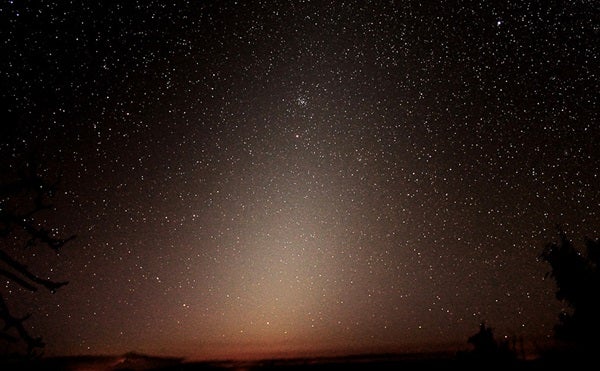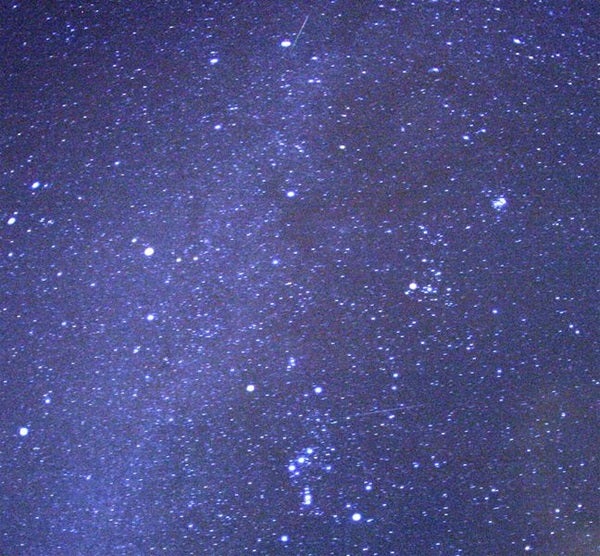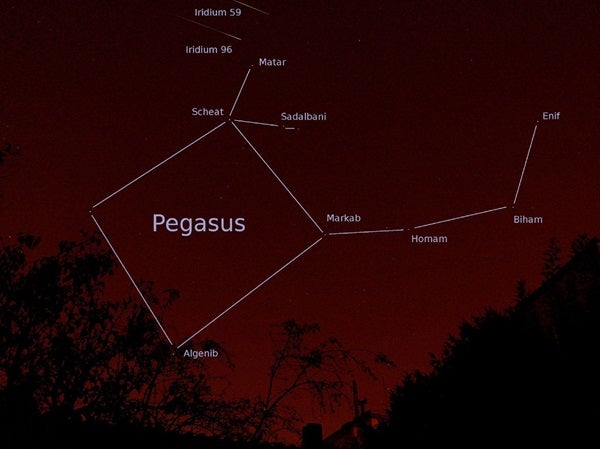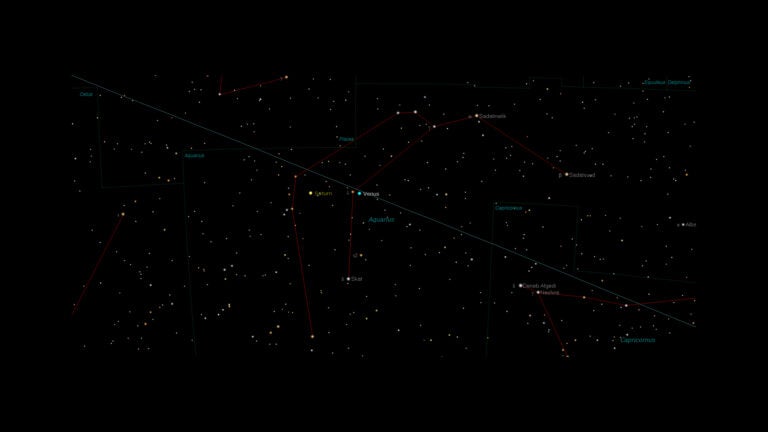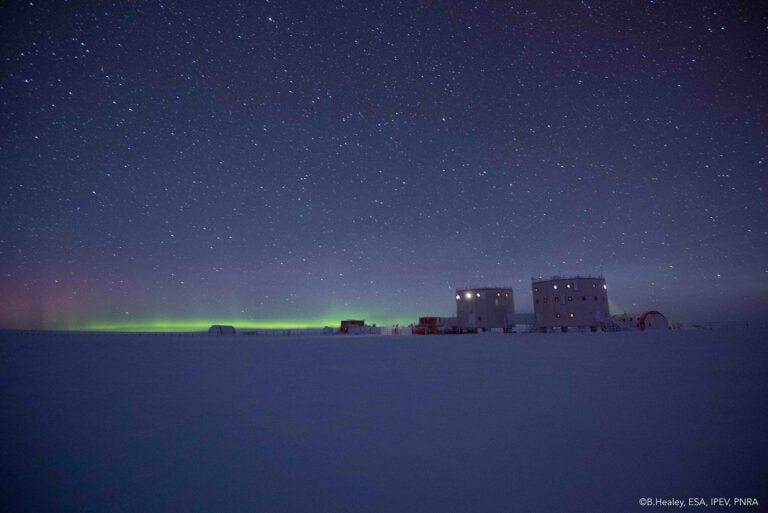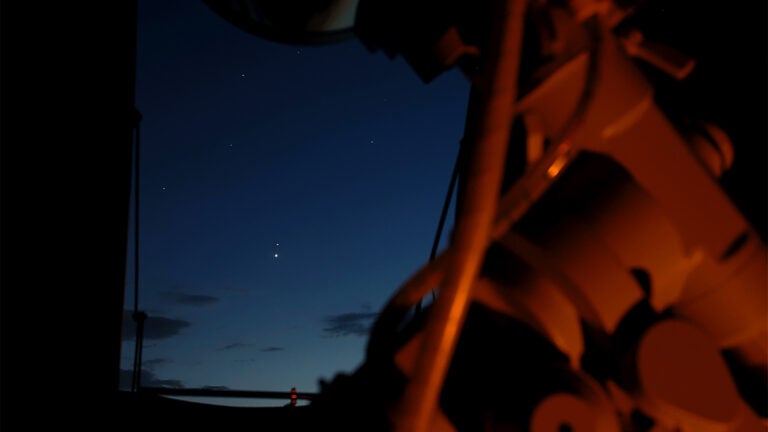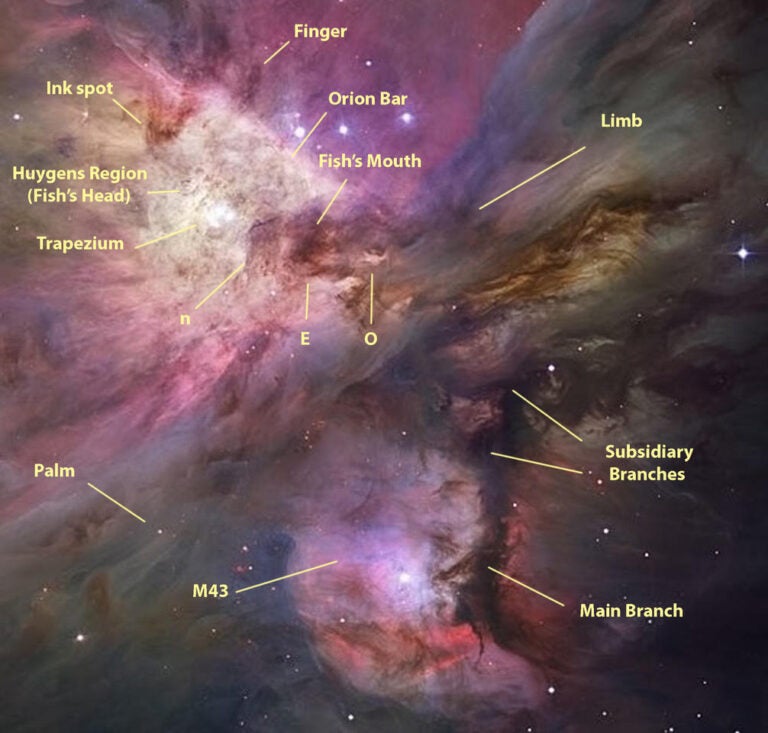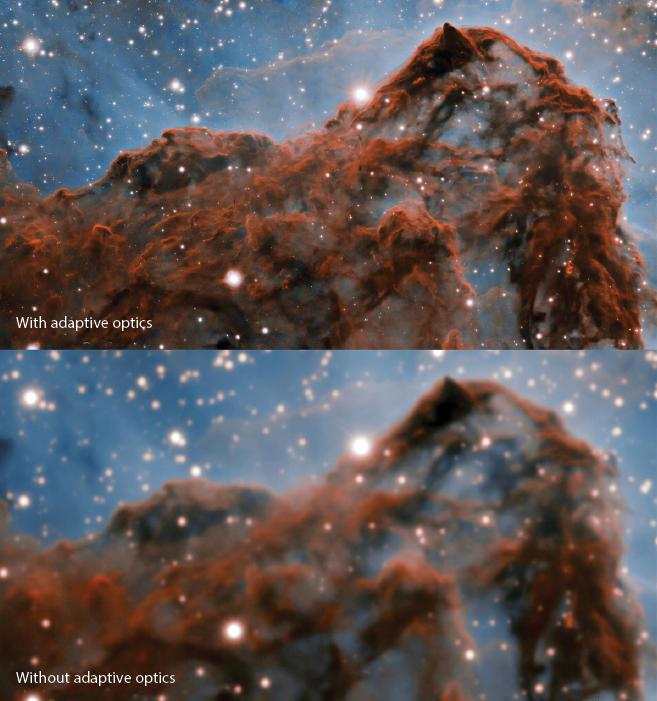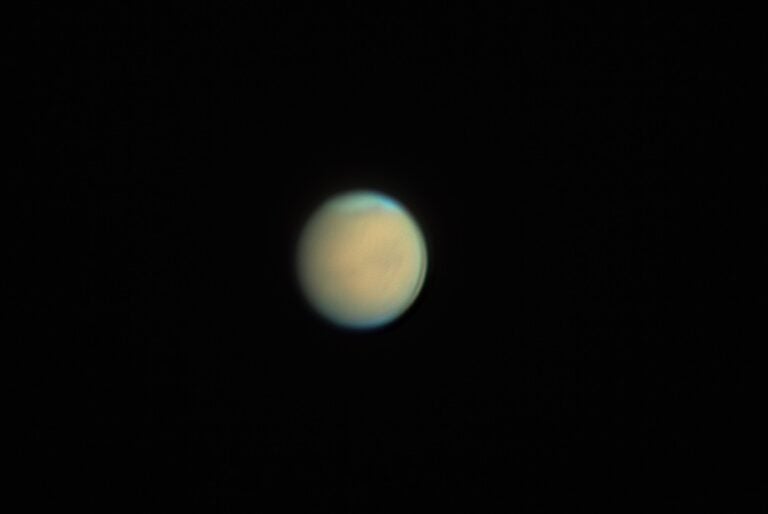Friday, September 29
Although Jupiter has been a conspicuous evening object for the past several months, it has now reached the end of its reign. If you have a clear and unobstructed western horizon, you should be able to find the giant planet this evening about 5° high a half-hour after sunset. Jupiter shines brightly, at magnitude –1.7, which is why it still shows up against the bright twilight glow. The planet dips lower with each passing night, however, and will disappear from view by the end of October’s first week. It passes behind the Sun on October 26 and will return to view before dawn in early November.
Saturday, September 30
The Moon’s absence from the morning sky these next few days provides observers with an excellent opportunity to view the zodiacal light. From the Northern Hemisphere, early autumn is the best time for viewing this elusive glow before sunrise. It appears slightly fainter than the Milky Way, so you’ll need a clear moonless sky and an observing site located far from the city. Look for a cone-shaped glow that points nearly straight up from the eastern horizon shortly before morning twilight begins (around 5:30 a.m. local daylight time at mid-northern latitudes). The Moon remains out of the morning sky until October 4, when the waxing gibbous returns and overwhelms the much fainter zodiacal light.
Sunday, October 1
Brilliant Venus rises around 5 a.m. local daylight time, shortly before morning twilight starts to paint the sky. It shines brilliantly at magnitude –3.9 and helps point the way to magnitude 1.8 Mars, which rises 13 minutes later. The two planets appear just 2.5° apart, and the gap will shrink noticeably over the next few days.
Monday, October 2
Tonight marks the unofficial start of the annual Orionid meteor shower. Although the Orionids won’t peak for nearly three weeks (on the night of October 20/21), you should start to see a few shower members in the early morning hours. These meteors appear to radiate from the northern part of the constellation Orion the Hunter.
Tuesday, October 3
Saturn remains a tempting target in this week’s early evening sky. The ringed planet stands 20° above the southwestern horizon as darkness falls. Shining at magnitude 0.5, it appears significantly brighter than any of the background stars in its host constellation, Ophiuchus the Serpent-bearer. Of course, the best views of Saturn come through a telescope, which reveals a 16″-diameter globe surrounded by a spectacular ring system that spans 37″ and tilts 27° to our line of sight.
Wednesday, October 4
The night sky’s most conspicuous harbinger of winter now rises in the east around midnight local daylight time. The constellation Orion the Hunter appears on its side as it rises, with ruddy Betelgeuse to the left of the three-star belt and blue-white Rigel to the belt’s right. As Orion climbs high in the south before dawn, the figure rotates so that Betelgeuse lies at the upper left and Rigel at the lower right of the constellation pattern.
Thursday, October 5
Full Moon occurs at 2:40 p.m. EDT, but our satellite will look completely illuminated all night. You can find it rising in the east shortly after sunset and peaking in the south around 1 a.m. local daylight time. The Moon skims along the border between Cetus the Whale and Pisces the Fish overnight. As the Full Moon closest to the autumnal equinox, which occurred September 22, this is also the Harvest Moon. In early autumn, the Full Moon rises about a half-hour later each night compared with a normal lag close to 50 minutes. The added early evening illumination supposedly helps farmers bringing in their crops.
Venus and Mars appear just 0.2° apart — about half the Full Moon’s diameter — before dawn. The two planets haven’t been this close since November 1995. If you view the pair through binoculars, you’ll also see the 4th-magnitude star Sigma (s) Leonis 0.3° north of Venus. Unfortunately, a telescope doesn’t add much to the scene. Venus measures 11″ across while Mars spans 4″, and both worlds appear nearly full.
Although Neptune reached opposition and peak visibility a month ago, it remains a worthwhile subject. The outermost major planet appears one-third of the way to the zenith in the southeastern sky after darkness falls and climbs highest in the south around 11 p.m. local daylight time. Neptune glows at magnitude 7.8, which is bright enough to spot through binoculars if you know where to look. The trick is to find 4th-magnitude Lambda (l) Aquarii, which lies about 10° southeast of Aquarius’ distinctive Water Jar asterism. This week, Neptune appears 0.6° southeast of the star. When viewed through a telescope, the planet shows a blue-gray disk measuring 2.3″ across. But the big event this evening involves Neptune’s large moon, Triton. Observers in the northeastern United States and eastern Canada can watch the satellite pass directly in front of a 12th-magnitude star. Viewers will see the star dim by 1.4 magnitudes for up to 161 seconds sometime between 7:44 and 8:00 p.m. EDT, depending on location.
Friday, October 6
The second brightest asteroid of 2017 puts on a nice show in October’s sky. Minor planet 7 Iris glows at magnitude 7.5, which is bright enough to see through binoculars from the suburbs. It resides in the constellation Aries the Ram, a region that climbs high in the east by late evening. Iris stands 3° due east of Aries’ brightest star, magnitude 2.0 Hamal (Alpha [a] Arietis), all week.
Saturday, October 7
Uranus reaches opposition in less than two weeks, but it is already a tempting evening target. The ice giant world rises within a half-hour after sunset and climbs more than 30° above the eastern horizon by 10 p.m. local daylight time. The magnitude 5.7 planet lies in Pisces, 1.4° west-northwest of magnitude 4.3 Omicron (o) Piscium. Although Uranus glows brightly enough to see with the naked eye under a dark sky, binoculars make the task much easier. A telescope reveals the planet’s blue-green disk, which spans 3.7″.
Mars reaches aphelion at 6 p.m. EDT, when the planet’s orbital motion carries it farthest from the Sun. It then lies 154.9 million miles (249.2 million kilometers) from our star.
Sunday, October 8
Look high in the east after darkness falls this week and you should see autumn’s most conspicuous star group. The Great Square of Pegasus stands out in the evening sky at this time of year, though it appears balanced on one corner and looks more diamond-shaped. These four almost equally bright stars form the body of Pegasus the Winged Horse. The fainter stars that form the rest of this constellation’s shape trail off to the square’s west.
Mercury passes behind the Sun from Earth’s perspective at 5 p.m. EDT. This means the innermost planet lies on the opposite side of the Sun from Earth and remains hidden in our star’s glare. It will return to view in the evening sky at the end of October.

